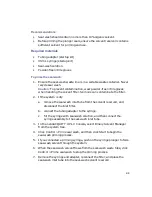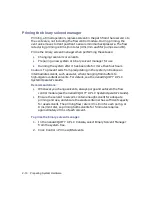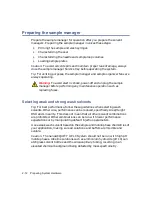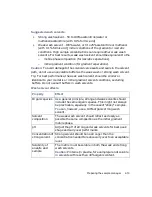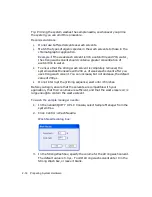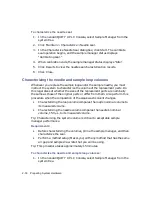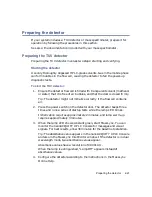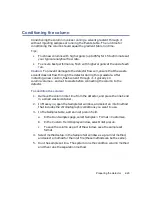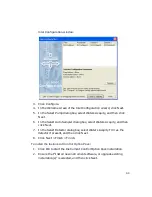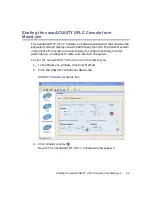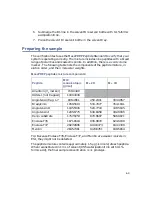
2-22
Preparing System Hardware
Recording sample and reference energies
After you install the detector or perform maintenance operations, like
changing the lamp or flow cell, complete the procedures in this section to
verify that the detector optics and electronics work properly.
To record sample and reference energies:
1.
Ensure that the detector is connected to the workstation.
2.
Flush the system tubing with filtered, degassed, HPLC-grade methanol
or acetonitrile.
3.
Pump mobile phase for 15 minutes or more at 2
µ
L/min.
Caution:
The maximum pressure drop across the flow cell is 1,000 psi. If
the solvent is viscous (methanol/water, for example), you might need to
decrease the maximum flow rate to prevent breaking the cell.
4.
Ensure the detector cell is filled with solvent and free of air bubbles.
Tip:
The detector might not initialize correctly if air is present in the
cell.
5.
When both LEDs show constant green, initialization is complete.
6.
Start the MassLynx software.
7.
To determine baseline values on the detector for future reference, and to
monitor lamp aging (for decreased lamp output energy), record the
baseline sample and reference energies.
Requirement:
Perform this procedure each time you change the lamp.
8.
Set the wavelength to 230 nm.
9.
Flush the flow cell
for 15 minutes or more with HPLC-grade methanol at
2
µ
L/min.
10. Record the sample and reference energies at 230 nm.
Preparing the mass spectrometer
Prepare the optional mass spectrometer for operation after you prepare the
sample manager. For specific steps, consult the mass spectrometer’s
accompanying documentation.
To configure MassLynx, see MassLynx Online Help.
Summary of Contents for nanoACQUITY UPLC
Page 7: ...vii ...
Page 16: ...xvi ...
Page 20: ...xx Table of Contents ...
Page 32: ...1 12 System Overview ...


